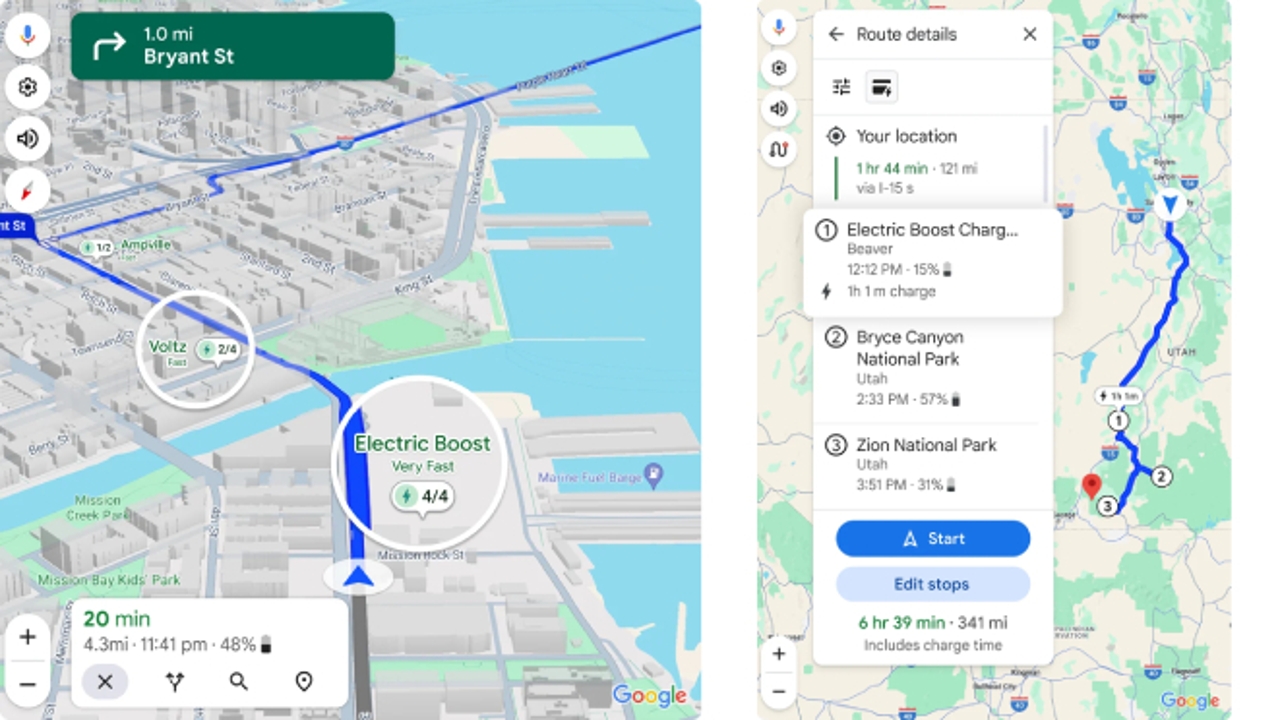Google Maps has announced a series of new features aimed at improving its support for electric cars and make it less stressful to find a charging point when traveling. Some are intended for all users of the app, while others require that Google Maps be part of the car's native systemsomething that can be found in brands such as Ford, Honda, General Motors and Porsche, among others.
Among the new features for all users, Google highlights the use of the artificial intelligence to make it easier to find the exact location of a charger, something that can be particularly complicated if they are located, for example, in a multi-level car park. AI will create summariesbased on information from user reviews, to give precise instructions. For example, “enter the underground parking lot and follow the signs to the exit. Just before you exit, turn right.” AI summaries on Google Maps are coming in the coming months.
To help craft the information the AI will use, Maps has added new issues to reviews about charging points. In addition to rating and evaluating the experience, Google now asks whether the charging has been carried out correctly, by the type of plug used and how long it has been waited. These are now available in the app.
Information about charging stations will now be more visible and will not depend on the user performing a specific search. When driving with a low battery, Maps will show you nearby stations directly on the map, with real-time information on the availability of chargers and their speed. This is a functionality that will only be available in electric vehicles with Google integrated, again in the coming months.
In addition to showing charging points at a glance, the app will simplify trips, including those with multiple stops, by suggesting the appropriate charging points to complete the trip and indicating the battery level with which each of them will be reached. In this way, the user will always know in advance what conditions they will be in at each stop and can modify them as they see fit. This feature will be released globallyalso in the coming monthsfor vehicles that natively integrate Google.

